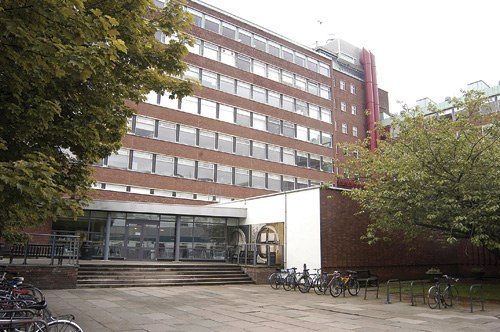For the past eight years, chemists in the United Kingdom at the University have been developing our understanding of how uranium and thorium interact with elements from around the periodic table to potentially help improve the creation of nuclear fuel and also the selective extraction of spent uranium for nuclear waste clean-up.
Stephen Liddle, Professor of Inorganic Chemistry and Royal Society University Research Fellow at the University of Manchester has been studying the chemistry of molecular depleted uranium chemistry since 2009. In 2012, his team created what is referred to as a "trophy molecule" of uranium nitride. Chemists had been trying to create a uranium nitride compound that was stable at room temperature for decades. The compound created by the Liddle team might possibly lead to a new form of nuclear fuel that has superior high densities, melting points, and thermal conductivities than that in existing mixed oxide nuclear fuel.
Following his work on uranium nitride, Liddle and his team worked on the development of a process for removing uranium from nuclear waste. He said that "We need to reduce the volume of nuclear waste to make it easier to handle, and process it to remove benign elements or separate the high-level waste from low-level waste. This latest study looked at how soft elements such as arsenic interact with uranium—arsenic could in principle be used in organic molecules that bond to metal atoms and improve extraction processes." Professor Liddle went on to say "There is currently a lot of interest in using organic molecules to extract, selectively, metal ions from the 'soup' of nuclear waste and fish out the 'bad' ones and leave the rest behind. This requires an understanding of chemical bonding and how the organic extractants bind to different metals. We can then exploit this knowledge to achieve separation by having them selectively bind to one type of metal and remove it from the soup."
There is mounting evidence that molecules that contain what are called "soft donor" atoms for metals might be best for cleaning up nuclear waste. Arsenic is a "soft donor" and easily forms stable compounds with many minerals. Dr. Liddle's group has created a variety of molecular complexes to test exactly how arsenic and phosphorous bind to metals. These compounds include uranium-phosphorus, uranium-arsenic, thorium-phosphorus, and thorium-arsenic
Elizabeth Wildman, a PhD student in Dr. Liddle's group at the University of Manchester recently discovered a way to produce grams of a compound of arsenic and thorium that previously had only been produced in tiny quantities. Previous samples had been prepared at extremely low temperatures. Wildman's process was much simpler and did not require such extreme temperatures. Her samples were stable at room temperatures. Wildman said "Nuclear power could potentially produce far less carbon dioxide than fossil fuels, but the long-lived waste it produces is radioactive and needs to be handled appropriately."
These breakthroughs at the University of Manchester will allow chemists to easily prepare and study samples of uranium and thorium compounds. Eventually, as the chemistry of such compounds is studied, better ways of producing nuclear fuels and extracting uranium from radioactively contaminated water may be discovered.
University of Manchester - School of Chemistry:
